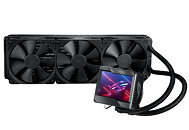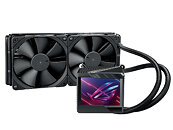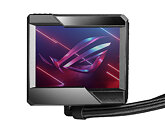Wednesday, April 21st 2021

ASUS Launches the ROG Ryujin II AIO Liquid CPU Coolers
ASUS today formally launched the Republic of Gamers (ROG) Ryujin II series all-in-one liquid CPU coolers. The second generation of Ryujin was first shown off in January 2021. The production version is unchanged. Launching in two variants based on radiator size—the Ryujin II 360 and Ryujin II 240, these coolers are characterized by a 3.5-inch true-color LCD display on the pump-block, and the inclusion of premium Noctua Industrial PPC 2000 PWM fans with the package.
The screen can be made to display anything from cool animation presets, to system monitoring, real-time cooling performance, and your clan's identity. The pump-block also has a concealed lateral fan that ventilates the CPU VRM area around the socket. The pump-block is functionally based on the 7th generation of AIO CLC technology by Asetek. The included Noctua Industrial PPC 2000 fans turn at speeds of 450 - 2000 RPM, pushing up to 71.6 CFM of air-flow at 3.94 mm H₂O static pressure. The company didn't reveal pricing.
The screen can be made to display anything from cool animation presets, to system monitoring, real-time cooling performance, and your clan's identity. The pump-block also has a concealed lateral fan that ventilates the CPU VRM area around the socket. The pump-block is functionally based on the 7th generation of AIO CLC technology by Asetek. The included Noctua Industrial PPC 2000 fans turn at speeds of 450 - 2000 RPM, pushing up to 71.6 CFM of air-flow at 3.94 mm H₂O static pressure. The company didn't reveal pricing.



30 Comments on ASUS Launches the ROG Ryujin II AIO Liquid CPU Coolers
and then for the people it did work for, it required an always running app that chewed CPU power
Being asetek, i wanted to merge it with the kraken G12 and slap it on a vertical mounted GPU
Personally I keep all the RGB stuff in my computer case turned off, but I enabled an alarm that turns it on, making all the LEDs red, when a component is hotter than normal. It was quite useful when some misbehaving app started overheating the CPU for no reason. I might not have detected it otherwise. Of course there are other options, like a sound alarm, but for example my speakers turn off automatically after a while if they are not used, so the RGB alarm is more reliable and less intrussive.